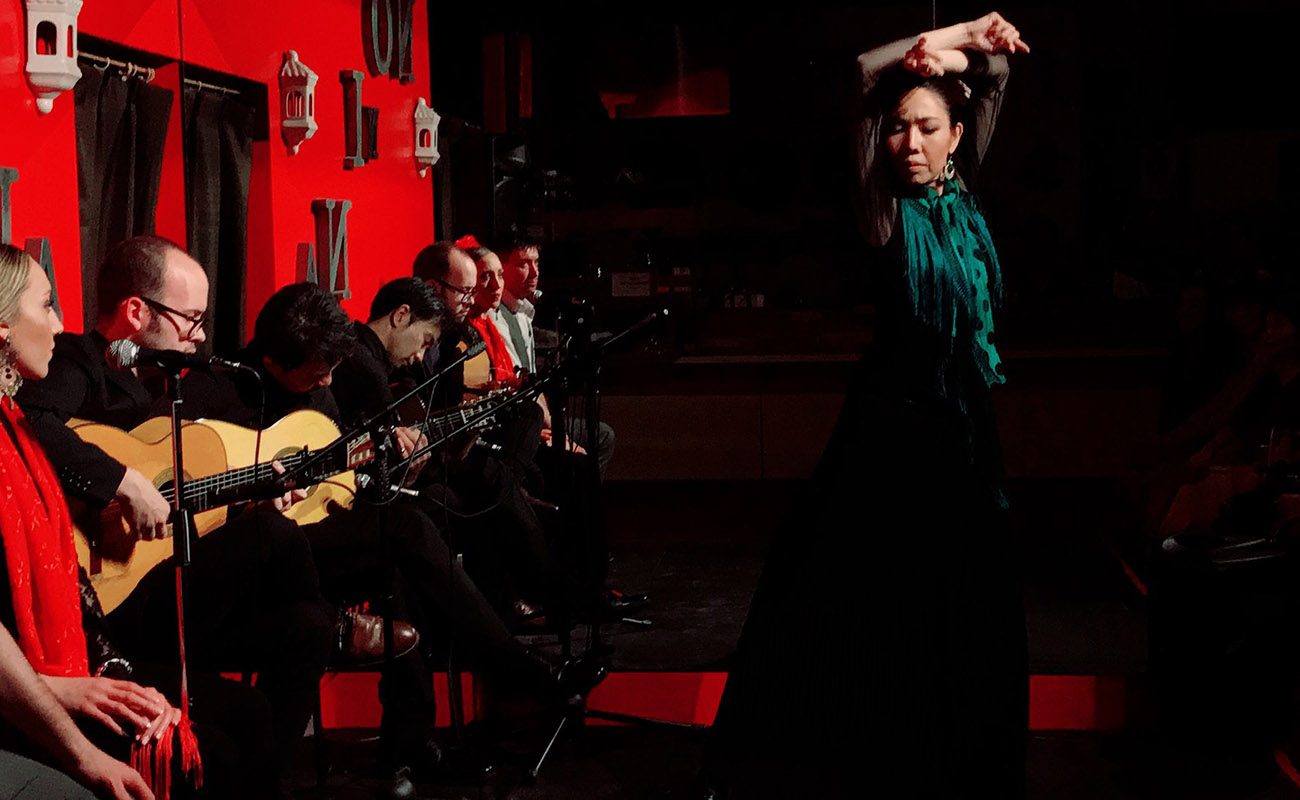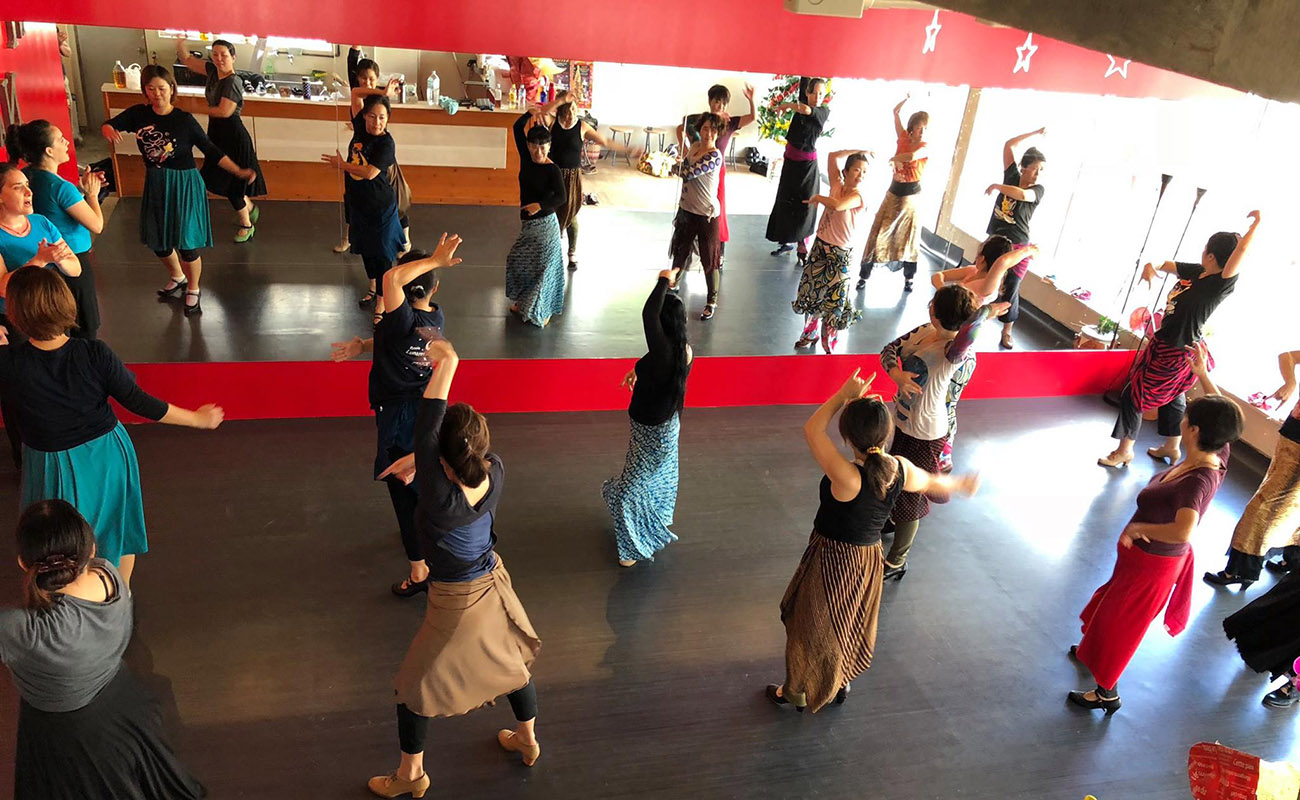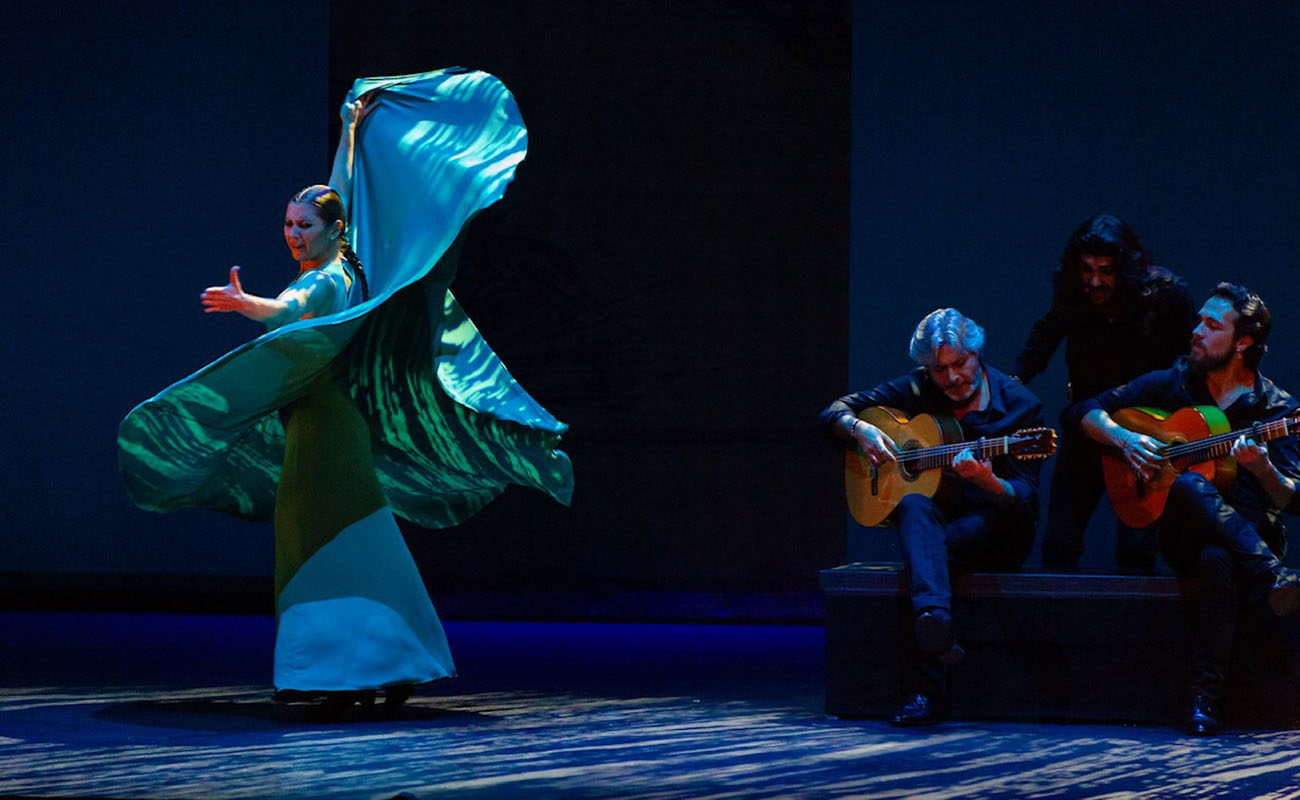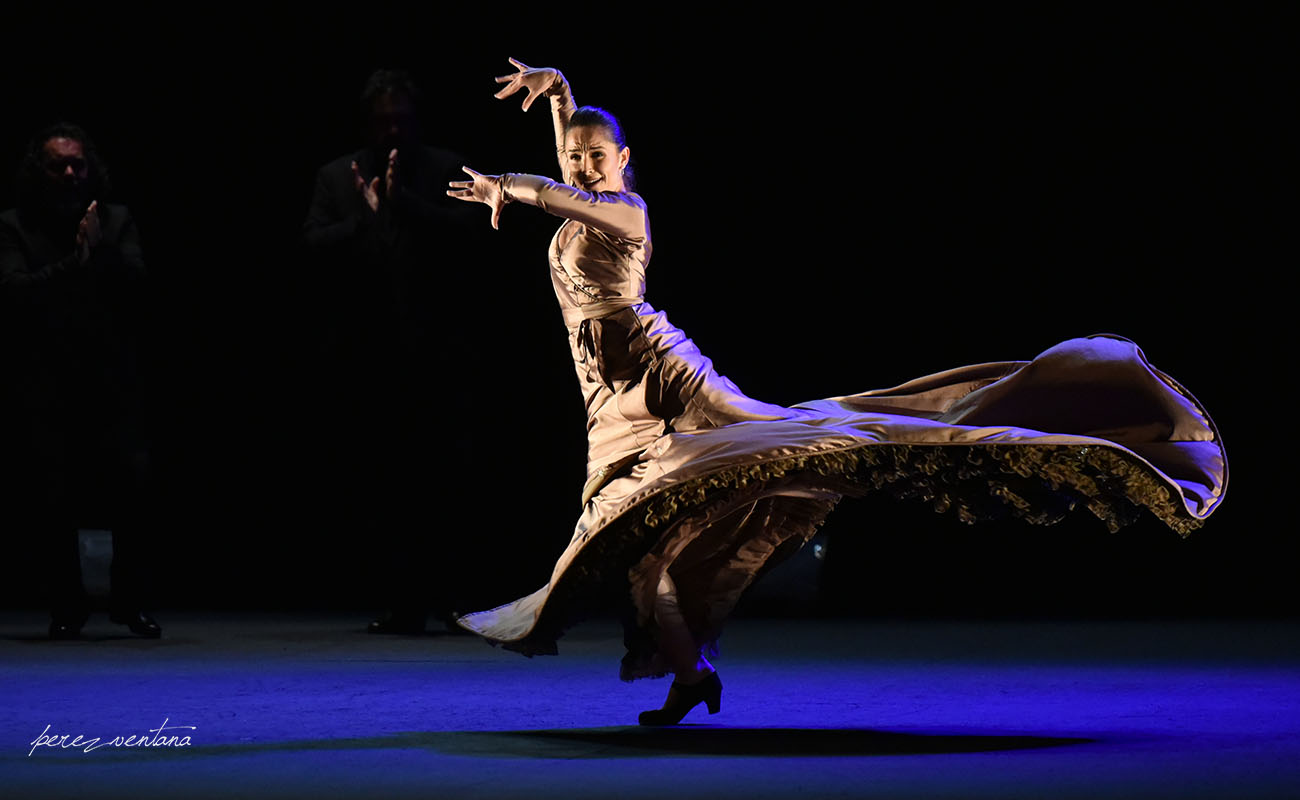Japan, Flamenco of the Rising Sun (1)
Japan is the second flamenco powerhouse after Spain. Behind the veil of cliches and stereotypes, there is a legion of authentic aficionados and artists who love this art genre

As the second decade of the 21st century comes to an end, it seems needless to acknowledge the great interest that Japanese people feel for flamenco. We are used to seeing them tour the historical centers of the Spanish cities, typically in tight groups guided by the obligatory colorful umbrella. This is nothing new, they’ve been touring Spain for many decades. Smartphones and selfie sticks have replaced cameras, but their motivation is the same as always: capturing a moment, collecting experiences and soaking Spanish culture in the two or three days that their visit lasts.
In their travels to Seville, Madrid or Barcelona, there is always a mandatory stop: a show of baile flamenco in any of the numerous tablaos of these cities. Flamenco para guiris, (“Flamenco for foreigners”), as the local flamenco aficionados call it dismissively. Indeed, this is often the case, but not always. The scene I’ve described is a cliche, a stereotype etched in the Spanish collective consciousness, although this doesn’t mean it doesn’t happen often. It also applies to tourists of other nationalities, although the number of Japanese visitors is higher.
«In pairs or in trios. They are true aficionados well versed in flamenco»
Yet, focusing on the stereotypes is to remain at the surface of a much deeper and interesting reality. All we have to do is to go to the numerous flamenco festivals that take place every summer all over Spain, particularly in Andalusia, or attend the flamenco series (“ciclos”) programmed in renowned theaters, where we’ll find hundreds of Japanese people among the audience. In pairs or in trios. They are true aficionados well versed in flamenco. They make quick trips to attend the Festival de Jerez, the Bienal de Arte Flamenco de Málaga or the Fiesta de la Bulería. About 50% of the reservations for the upcoming Bienal de Flamenco de Sevilla have been made from Japan.
There is an even more revealing statistic about the immeasurable passion that Japanese people feel for flamenco. Thousands of them work for ten months in their country so they can spend two months studying flamenco in Spain. Their preferred destination is Andalusia, naturally, with Seville, Jerez de la Frontera, Málaga, Granada and Córdoba as the leading destinations. Most of them are artists or students of baile, although there are also students of guitar and — a much smaller number — of cante. They come to perfect their technique and soak the atmosphere surrounding flamenco, experiencing the essence of life in Andalusia.
What’s the reason for this interest in flamenco?
What has made this flamenco passion take root in the Land of the Rising Sun, in a much deeper way than in any other country in the world? It’s clear that flamenco is a music genre with universal appeal, like blues, jazz, rock, opera of classical music. The timeless nature of these genres imply that they are not bound by short-lived fads, enabling them to cross geographic barriers. Regarding flamenco, being officially designated by UNESCO as Intangible Cultural Heritage in 2010 strengthened its universal character even further, a milestone which popularized this art form around the world even more, including Japan. Yet, this cannot fully explain Japan’s ranking as the second country with the most flamenco productions, only surpassed by Spain itself.
Someone who knows this matter firsthand is the journalist Kyoko Shikaze, who was interviewed by ExpoFlamenco in August 2019. Kyoko is a Japanese journalist who has been in love with flamenco for over thirty years, having left her country and her work for flamenco’s sake. Living in Triana since then, she still can’t quite explain why: «There are several hypotheses. The most credible theory states that [it’s because] expressing feelings is frowned upon in Japanese culture. Doing so is perceived as shameless. So, an art genre that is all about expressing our deepest feelings stands out. It may also have to do with the fact that flamenco has Asian roots, through the Gypsy people who originally came from India. There are folk songs in Japan that are sung not unlike flamenco».
Dr. Mayte Antúnez, flamenco specialist, agrees with the matter of forbidden expressiveness. In a lecture given in July 2016 at Tokyo’s Instituto Cervantes and quoted by the DeFlamenco.com website, Antúnez explained that Japanese people conceive life in a way that self-development, through any activity that fosters personal growth — be it in the artistic, academic or cultural spheres — is considered essential». Flamenco is not just another activity that Japanese people — particularly Japanese women — can chose. «Unlike other options, flamenco is raw passion and feeling. This stands out and captures the attention of anyone, anywhere in the world. With the peculiarity that in Japan, due to its very strict rules of social behavior, the expression of emotions and feelings in completely nullified. That’s why here people better appreciate the power and greatness of this art».
The greatest flamenco artist in Japan is the famous Yoko Komatsubara, born in Tokyo in 1931. A pioneer in the introduction of this art to her country, this great bailaora celebrated the 50th anniversary of her Compañía de Ballet Español this summer. Her bold November 2011 statement is well-known: «In Japan we’ve almost made flamenco our own art genre». In a 2009 interview for Canal Sur, Yoko said she didn’t know why flamenco was so popular in Japan. «I don’t know, flamenco is something mysterious. I don’t even know why I myself like it so much. All I can say is that people approach me in my tablao in Tokyo, and give me thanks for making them happy, because they leave motivated to go to work the next day».
[… to be continued]
Photos: Carlos Gomez Okinawa Flamenco Dance School






